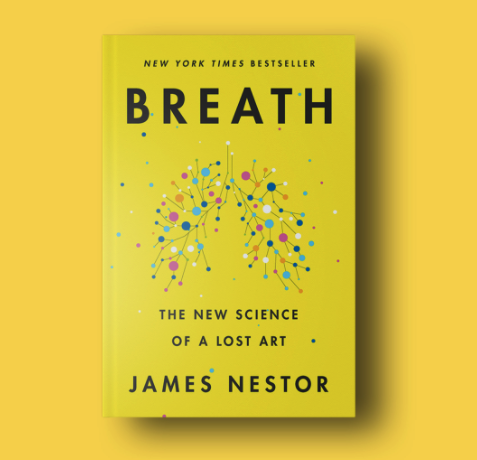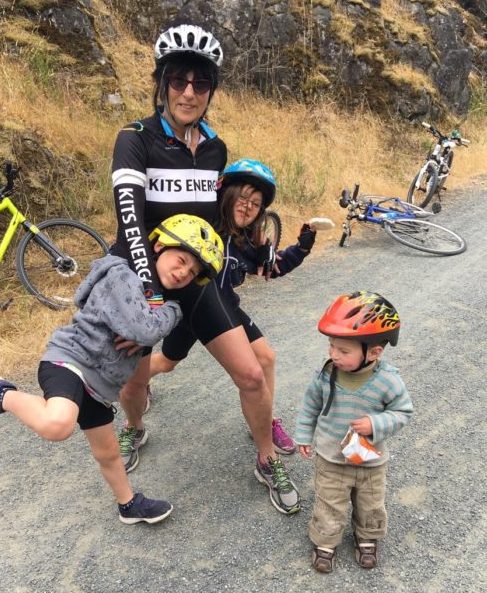Breathing is the one activity we think should happen naturally and correctly.
But evolution does not always mean improvement. Over time, breathing correctly has become a lost art, leading to poor mental and physical health and less than optimal athletic performance.
I have been attending yoga classes for over 20 years. Every time they started or ended the class with alternate nostril breathing or “breath of fire,” I would grit my teeth and go through the motions waiting for it to be over so I could get on with the workout. I never asked why we were doing these breathing exercises, and I barely participated long enough to receive any benefits.
During the summer of 2021, I attended a course titled “Breathe: Your health, movement, and performance depend on it!” led by Brian Justin. The course was based 100% on Patrick McKeown’s book “The Oxygen Advantage.” McKeown’s theory is that most of us are over breathers, consistently and constantly hyperventilating, which hampers the body’s ability to utilize oxygen. Our problem isn’t that we don’t have enough oxygen, but rather it is a problem of not having enough carbon dioxide (CO2). C02 is what determines how much oxygen your body can use. It is the crucial variable that allows the release of oxygen from the red blood cells, which is what you want most when climbing a hill.
For years I taught box (or square) breathing to help calm the nervous system, and I knew that breathing was a critical component missing in most training programs, including my own. Still, I was skeptical that breathing exercises offered the long list of benefits listed below, and so began my six-month-long research into the art and practice of breathing.
Breath by James Nester was the book that best explained the importance of breathing correctly and adopting a breathing practice. In his book, Nester undergoes a personal and journalistic journey to uncover the importance of breathing, how over-breathing and mouth breathing lead to health problems, and how to change our breathing patterns to improve our health and performance. I realized that what Nester had discovered as “new information” was what yogis and Ayurvedic medicine have known for centuries. Better late than never.
Excited by the positive results in my own life, I started to sneak some breathing exercises into my classes. I began to teach specific breathing exercises to private clients that would best suit their unique breathing issues and habits. In a few short weeks, my clients reported better sleep, more energy, better endurance in their sport, shortened recovery time, and generally feeling more calm and relaxed.
I wanted to know more and dove deeper, reading into all the types of breathing, purposes, and goals. I was shocked to learn that there are more than 30 different breathing techniques to choose from, which at first glance seemed overwhelming. In the end, I realized that except for Whim Hoff, every author or Teacher agrees on one type of breathing; slow breathing. Slow breathing is the most simple of all the breathing exercises. It is so simple that I’m sure you will think like I did, that it would be of no use and a waste of time. But not everything in training has to be complicated or painful. When possible, enjoy the easy ways that can improve your performance. So what is slow breathing?
Inhale through the nose slowly for a count of 5
Exhale through the nose slowly for a count of 5
Repeat for 2 mins, working your way up to 5 minutes every day. Once you get to 5 minutes, repeat twice a day, once in the morning and once before you go to sleep.
If counting to 5 is too long, you feel breathless, or it doesn’t feel easy, start with a count of 3 or 4 seconds and work your way up to 5. TIP: DO NOT MAKE THIS HARD.
So are you ready to read how you will benefit?
- improves aerobic performance and V02 max
- improves heart rate variability (see post on HRV to come)
- improves sleep quality
- reduces inflammation and recovery time from training
- lowers blood pressure
- lowers resting heart rate
- reduce asthma symptoms and breathlessness during exercise
- improves focus and concentration
- reduces anxiety and depression
- reduces muscle tension
- improves digestion and detoxifies the body
- reduces menopausal symptoms
- helps with weight loss and weight maintenance
- anti-ageing
- boosts immune system
Negatives:
NONE




